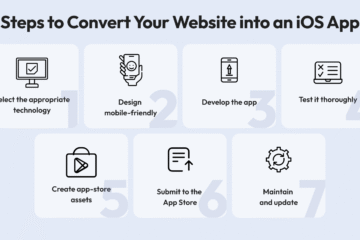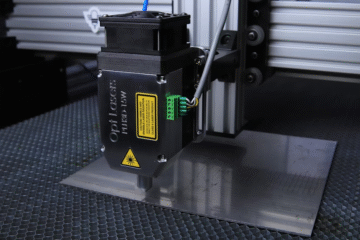How eSIM Technology Works: A Look Inside the Digital SIM Revolution

Key Takeaways
- Traditional cell phone SIM cards will quickly be replaced with eSIM cards, a digital alternative that is reshaping how people talk and travel.
- eSIM cards, or embedded SIM cards, are digitally activated chips that offer several benefits, including quick connectivity and the ability to create more slender phones.
- Additional eSIM technology benefits include being able to travel anywhere without roaming expenses, improved security, and a greater demand for IoT devices.
One day, you’ll tell your kids or grandkids about when you used to go to the mobile phone store to switch carriers and activate your Subscriber Identity Module (SIM) card. They’ll look at you wide-eyed, just as children used to look at their parents after discovering they used to use payphones and paper maps.
Phone technology is changing once again.
Research shows that 50% of smartphone connections should be enabled with embedded SIMs, or eSIMs, by 2028, and this percentage could potentially jump to 88% by 2030. That’s because eSIM technology offers many benefits for cell phone users. Let’s explore how eSIM technology works and why it’s propelling a digital SIM revolution.
eSIM: What Is It?
Photo by omid armin on Unsplash
eSIMs are programmable chips built into devices’ hardware. While most SIM cards today have to be physically swapped and inserted, an eSIM is soldered onto a motherboard and digitally activated. eSIM technology allows for easy downloading and switching between phone carrier profiles without requiring physical cards.
How eSIM Technology Works
The eSIM technology ecosystem features multiple key components, including the following:
- Embedded universal integrated circuit card (eUICC): a physical chip made to store several cryptographic keys (secret codes designed to safeguard digital information) and operator profiles.
- The subscription manager discovery service (SM-DS) allows devices to discover available eSIM profiles.
- Subscription manager data preparation (SM-DP+): a cloud platform that manages and creates eSIM profiles.
- Local profile assistant (LPA): Device software designed to manage profile switching and installation.
Activating eSIM cards usually involves scanning quick response (QR) codes, clicking links, or using apps. After being activated, devices connect to the cell phone network instantly. During setup, an eSIM can also easily be transferred between devices.
Why a SIM Revolution Is Happening
Today’s shift to the digital eSIM from the physical SIM is revolutionizing the telecommunications industry. Let’s dive into eSIMs’ unique benefits.
Rapid Connectivity
Users of eSIM technology can enjoy instant connectivity, activating their plans in just minutes. Store visits and shipping are no longer required.
Global Convenience
Travelers can now switch to new networks easily anywhere in the world, avoiding expensive roaming fees. SIM card prepaid plans that use eSIM technology are making global travel simpler and cost-friendlier than ever.
Slimmer Phones
Travelers can also take advantage of water-resistant, more compact devices since phones no longer require SIM trays. Removing these trays will free up valuable real estate not only for slimmer designs but also for new sensors and bigger batteries.
Eliminating the need for SIM trays is especially critical for ultra-thin laptop computers, wearables, and Internet of Things (IoT) devices.
Improved Security

Photo by Franck on Unsplash
The SIM transformation offers enhanced security, with eSIMs reducing risks such as fraudulent activity involving SIM swaps or unauthorized access. That’s because tampering with eSIMs is more difficult than tampering with physical SIMs.
Anybody who can access your mobile device may remove, swap, or clone your physical SIM. Meanwhile, since an eSIM is soldered onto the motherboard, no one can access it without essentially dismantling your phone, which is a process that is often detectable, risky, and complex. Plus, strict authentication protocols are used with eSIMs to verify users’ identities with carriers. The cryptographic keys that eSIMs use are held within tamper-resistant elements, making it challenging for any hacker to manipulate or extract them.
Carriers may also remotely wipe, lock, or manage eSIM profiles when they detect suspicious activity, making it more straightforward to address SIM security threats.
Greater Convenience for Business and Society
Society overall can further benefit from eSIMs through the expansion of IoT: eSIM technology simplifies global smart device deployments in smart cities, logistics, and healthcare. Enterprises can facilitate device deployment worldwide with convenient centralized control.
Due to these enhancements, more than nine billion devices using eSIM technology are anticipated to ship by 2030, including over three billion IoT devices.
Industry Effects
The shift to digital SIMs is encouraging cell phone service providers to reevaluate how they do business. This means transitioning to digital service from purely physical logistics. It also means offering IoT, streaming, and cloud solutions along with connectivity.
Cell phone service providers may additionally leverage remote provisioning more to decrease their support costs while still enhancing the user experience. Users won’t have to visit stores or wait for SIM cards to arrive since activation is instant.
Another benefit of eSIM technology for both users and cell phone service providers is that eSIMs can easily store several carrier profiles. That means users can switch between personal and work lines, as well as travel and local plans, without having to swap their hardware.
Join the Digital SIM Revolution Today
With eSIM technology picking up steam around the world, now is an excellent time to begin exploring its benefits for yourself. eSIMs are reshaping travel, enabling cell phone users to connect to the network more quickly, boosting security, and fueling the growth of IoT. Consider all the benefits of eSIM technology as you seek to make both business and pleasure easier to navigate in the months and years ahead.






No Comment